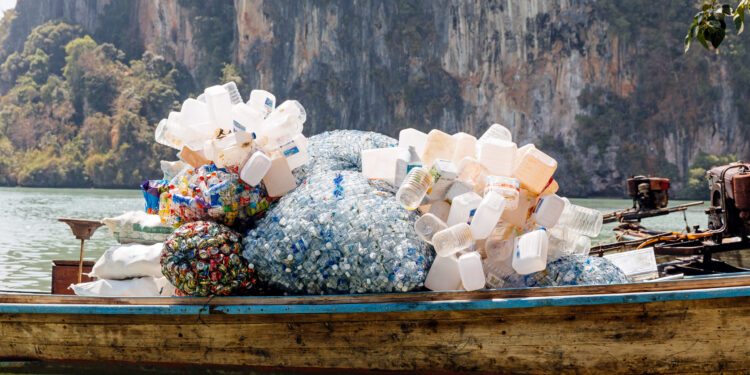The Ocean Cleanup Project is taking on the massive goal of eliminating plastic from the ocean by going straight to sea and extracting the trash.
Joost Dubois, the director of communications, spoke to The Daily Wire about the project, its unique nature, setbacks, and what it hopes to accomplish.
The Ocean Project noted on its website that millions of tons of plastic go into oceans each year, with most of it coming from rivers. Some of the plastic makes its way out to sea, and is trapped in currents where other plastic is collecting in massive garbage patches.
The goal of the project is to get rid of 90% of the world’s ocean plastic by 2040, which Dubois said is an ambition, “but [a] possible goal.”
The project goes into the ocean and puts cleanup systems in regions where currents circulate trash and create the garbage patches. They use a specific speed to catch the plastic in the system, and then pull the trash from the ocean. Once they have it on board, they bring it back to land in order to turn it into recycled products.
There have also been several setbacks along the way, but the group has learned to adapt.
Dubois explained a time when the system broke, creating a potentially massive problem, and they had to learn from the experience.
“The first ocean system we launched in September 2018 broke in December of the same year due to mechanical failure. So we used a plastic floater in that system,” he said, adding, that “it really was a fatigue failure of the pipe.”
“During the watch from the bridge, it was noticed that suddenly a part of the system was floating away, drifting away. And it was after it had broken off,” he said.
However, when setbacks come, they adapt.
“A failure is not always a failure. We learn from it. We try to schedule our learning. And sometimes, when the system broke, for example, we call that an unscheduled learning opportunity. But we definitely learned from [it],” he noted.
Garbage patches in the ocean have the potential to have a negative effect on the health of humans, marine life, as well as the economies of the world.
Two 2014 reports from the United Nations showed that plastic trash creates $13 billion in financial harm each year to marine life.
Discussing the UN report, Dubois added, “And that is a combination of different types of damage. So that’s really the economic side. It’s shipping, it’s tourism, it’s cleanup costs that are currently connected to marine debris.” He also explained how ghost nets, or deserted fishing nets, can get caught in boats, as well.
Ocean plastic could also have devastating and unforeseen impacts on people’s health.
He discussed “a large group of marine animals that are currently under threat related to plastic pollution,” Joost said, adding that “because this plastic is being mistaken for food by fish and other marine life, it ends up in the food chain and eventually becomes part of our diet.”
The Ocean Cleanup turns its plastic into products to sell, such as sunglasses, which it took to market.
“I think one of the things we’ve always had as part of our ambition is that we would like to do something with the plastic that we collect to bring it back to shore and try to come up with an approach that would minimize the chance of it ever getting back in the ocean,” he said. “So we do work hard to get it recycled rather than landfill it or incinerate it. And that is not easy, but it’s also not impossible.”
He also said that the Ocean Cleanup is unique in its approach of recycling in that its plastic is verified as having truly come from the ocean.
“We hope to prevent […] our ocean plastic from [being] mistaken for something else which is flooding the markets right now,” he said.
He said other companies sell products that they allege is made from ocean plastic, but their plastic does not have the same kind of strict validation process that The Ocean Cleanup’s trash goes through.
“We built this quite elaborate scheme to make sure that [if] you buy our stuff that you at least know for sure that it is stuff that we collected from the middle of the ocean,” he explained. “We’re thousands of miles away from shore where we operate. So we think that is worth some special attention and pricing.”
The ambitions of the project are two-fold. It seeks to not only use its technology to remove plastic from the oceans, but it also plans to “intercept plastic in rivers before it reaches the oceans,” according to its website. It will do this by heading to 1,000 rivers across the globe and stopping 80% of river plastic from ending up in the seas. It plans to achieve this goal five years after initiating the process.
The project is a passionate attempt to do some good in the world.
Dubois said that they are a non-typical nonprofit, adding, “We don’t collect money to sustain ourselves. We really collect money to get this fixed and then we go and do something else.”











